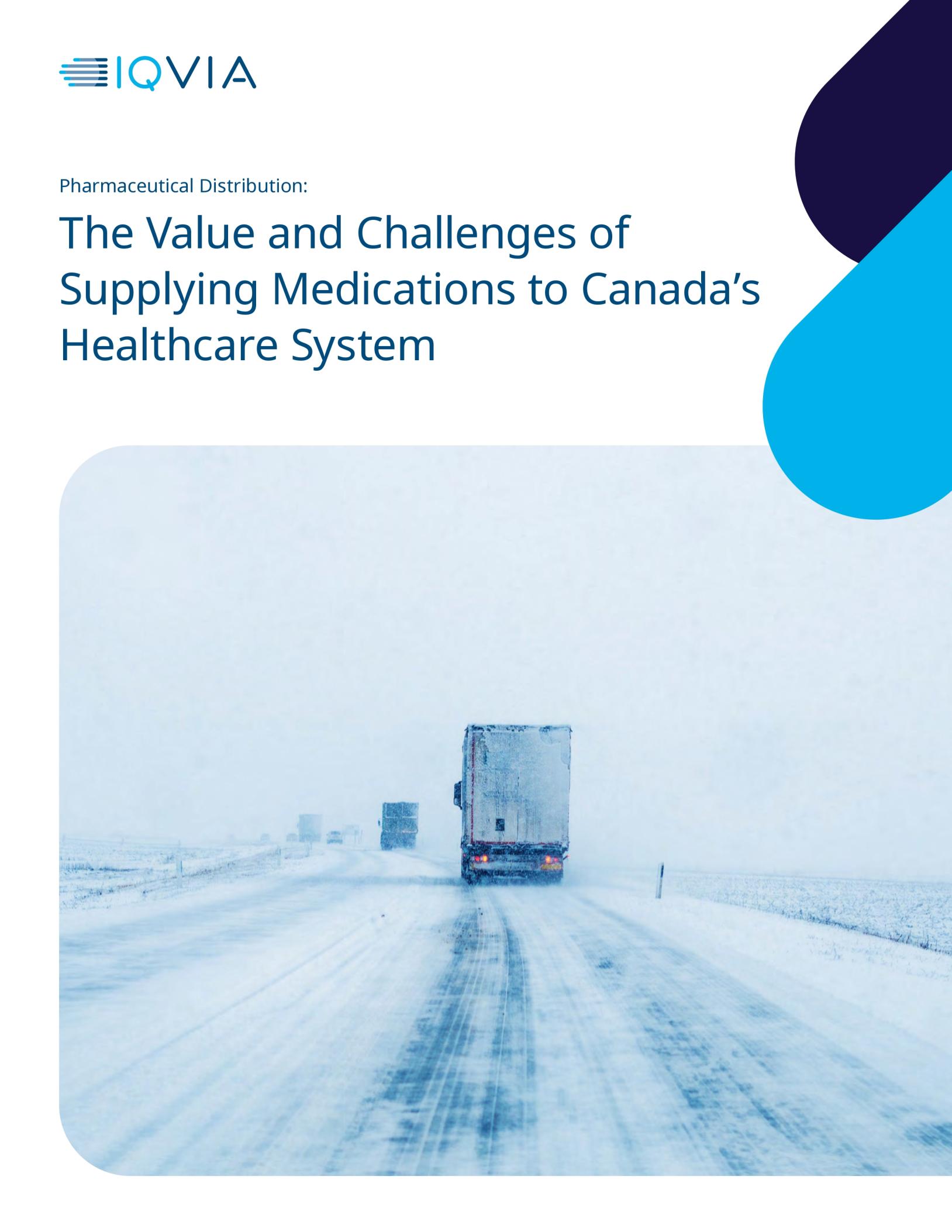A New Report Highlights the Often-Overlooked Role of Pharmaceutical Distributors

As medication demand grows and health-care delivery evolves, distributors quietly play an increasingly vital role in making sure Canadians get the treatments they need, when and where they need them.
A new report from the Canadian Association for Pharmacy Distribution Management (CAPDM), based on analysis conducted by IQVIA Canada, puts the spotlight on this essential — but often invisible — supportive infrastructure. Titled Pharmaceutical Distribution: The Value and Challenges of Supplying Medications to Canada’s Healthcare System, the report shares insights into what it takes to move millions of medications across a vast and geographically complex country.
“Distributors are the engine behind Canada’s medication supply,” said Angelique Berg, president and CEO of CAPDM. “Whether it’s downtown Vancouver or a remote northern community, they make sure medications arrive safely, securely, and on time.”
The Numbers Tell the Story
- The report highlights the reach and reliability of Canada’s pharmaceutical distribution network:
- Over 90 per cent of all prescription medications in Canada are delivered by distributors, who process around 240,000 orders every week to pharmacies, hospitals, and clinics.
- More than 80 per cent of those deliveries arrive within 24 hours, thanks to a well-developed national network.
- Demand for cold chain medications, including biologics and specialty drugs, is on the rise — bringing added complexity and care to handling and transportation.
- Despite challenges like extreme weather or global supply chain disruptions, Canadian distributors maintain over 99 per cent delivery accuracy.
- Operating costs have jumped by 23 per cent in recent years (based on available data for 2021 and 2022), driven by higher fuel and labour costs, increased demand for cold chain management, and new regulatory requirements — yet funding models have not kept pace in over 15 years.
Rising Trade Tensions
Another emerging challenge comes from south of the border. Recent proposals in the U.S. suggest tariffs as high as 200 per cent on imported pharmaceuticals. While Canada may not be the direct target, the deeply interconnected nature of North American trade means Canadian companies could still feel the ripple effects — potentially placing added strain on Canada’s pharmaceutical supply chain infrastructure.
“Canada’s pharmaceutical distribution network may not be widely recognized, but it plays a foundational role in ensuring people across the country can access the medications they need,” said Berg. “We need to keep it strong, responsive, and protected from external disruptions — whether that’s tariffs, regulations, rising operational costs, or global supply chain volatility.”
Supporting Pharmacists, Strengthening Health Care
Pharmaceutical distribution is more than moving boxes from point A to point B. It is about ensuring equity, consistency, and responsiveness in our health-care system. Distributors manage the behind-the-scenes work, so that front-line health-care professionals, including pharmacists, can focus on care.
For pharmacy professionals across British Columbia, this reliability means being able to count on regular deliveries, respond to patient needs, and navigate evolving medication demands. When pressures on the distribution system increase, pharmacists are often one of the first to feel the impacts — from managing stock issues to answering tough patient questions.
The CAPDM report calls for a fresh look at pharmaceutical distribution as a strategic pillar of healthcare planning, especially as care becomes more patient-focused, specialized, and decentralized.
“Distributors have shown time and again that they can adapt and deliver, even under pressure,” Berg noted. “They should be part of the national conversation about improving access, equitable care, building resilience, and planning for future health-care needs.”
For more information, visit capdm.ca.
